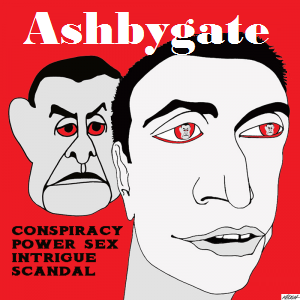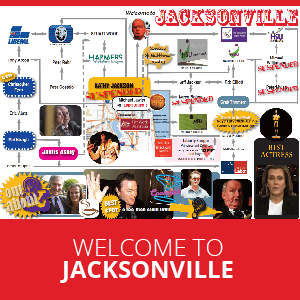A new book provides a sharp and unsettling examination of how Australia’s foreign policy is being shaped, steered and stretched by the strategic ambitions of a Trump-led United States. Bevan Ramsden reviews Turbulence: Australian Foreign Policy in the Trump Era.
WE ARE INDEBTED to Clinton Fernandes for his insights into the worldwide economic turbulence and political uncertainties created by the Trump Administration.
In Turbulence, Fernandes shows that underneath this chaos lies a calculated agenda designed to achieve and maintain United States dominance economically and in the key areas of telecommunications, space, robotics, bioengineering, nanotechnologies and manufacturing, which means full-spectrum rivalry with China. If economic control is not possible, then plan B is global economic separation from China.
To achieve his goals, Trump’s attention is being directed at three front lines — Eastern Europe, the Middle East and Taiwan.
Fernandes demonstrates the true purpose of Australian foreign policy in this turbulent Trump era. Put quite bluntly, he sees the primary purpose of such policies being a continuing subservient commitment to keeping Australia relevant to the United States.
Turbulence exposes the base objective of the Trump Administration: more money for the rich. All else is window dressing and feeding divisive prejudices to keep the necessary degree of public support.
Trump’s key election backers were a coalition of elite investors. And they have been rewarded. Thirteen members of his cabinet are billionaires and they have a combined wealth of $460 billion. It's a case of rule by the rich for the rich.
Fernandes writes:
‘Trump is trying to accelerate the pace of the global restructuring... [his] agenda at home and abroad follows the Golden Rule. It is primarily the agenda of his elite investor coalition, most notably the representatives of technology, finance, oil, gas and mining interests. It is also, and most prominently, the agenda of the voting base of the modern Republican party, for whom the separation of church and state are not core values.’
On the European “Frontline” of Trump’s strategy, Fernades says that following the end of the Cold War:
‘The central front in the struggle for global supremacy is not Europe but China. The priority of U.S. strategy is no longer for its European allies to get rich and contribute to the military defence of the continent. Instead, their role is to fit in with U.S. industrial policy, curtail their economic relations with China and help preserve U.S. technological dominance.’
On the subject of increased European military spending, Fernandes says:
The United States wants Europe to spend more on its military but has always opposed Europe’s plans to integrate its members’ forces independently of the United States. That is to say, the United States is opposed to European strategic autonomy. It wants Europe to spend more so the United States can focus on China, not so that it becomes independent of the United States. The U.S. will remain in the background with its nuclear deterrent, but its conventional forces will focus on China and the western hemisphere.
Moving to Trump’s Middle East Frontline, Fernandes makes clear the key issue for the United States:
‘The control of Middle Eastern oil is the main goal of U.S. strategy for the region... Whoever controls it can exercise global influence... The key to understanding U.S. strategy is to distinguish between “access to oil” and “control of oil”.’
Fernandes quotes former National Security Advisor Zbigniew Brzezinski, who wrote:
‘The United States’ military dominance in the Middle East region gives it indirect but politically critical leverage on the European and Asian economies that are also dependent on energy imports from the region.’
Fernandes explains the importance of Israel in ensuring that the U.S. exercises control over Middle East oil. Apart from arming Israel, acknowledged by Zohar Palti, a former intelligence director of Israel’s Mossad intelligence agency, who said in October 2024: “Without the U.S. weapons, Israel cannot fight. But it is Israel who takes the risks [and] knows how to do the job.”
Fernandes continues:
The United States supports it as part of an imperial vision: the United States is the imperial power, controlling the region through a sub-imperial power (Israel) and protectorates (oil-rich Arab monarchies). Both the U.S. and Australia know that Israel possesses nuclear weapons. It is assessed as possessing around ninety nuclear warheads for delivery by aircraft, land-based ballistic missiles and possibly sea-based cruise missiles. [But] foreign policy is a matter of priorities and ensuring control of Middle-Eastern oil is a higher priority than a nuclear-free zone in the Middle East.
Having invaded Iraq on the basis of Resolution 687, the United States and Australia have a special responsibility to pursue a nuclear-free zone in the Middle East. The absence of effective domestic constituencies means they are under no pressure to do so. [Further], until they face a significant domestic political challenge to their foreign policies, the United States and Australia can continue to ensure that Israel remains the sole nuclear-armed state in the Middle East, even as they sanction Iran.
In Frontline China, Fernandes quotes Trump’s Defence Secretary, Pete Hegseth, as calling China his ‘sole pacing threat’:
The United States will defend its homeland, of course, but apart from that, the denial of a Chinese fait accompli seizure of Taiwan is now the Pentagon’s sole pacing scenario. That means U.S. commanders are preparing to defend Taiwan from a Chinese takeover, if ordered to do so. The United States plans to increase the number of submarines, bombers, unmanned ships, bunker-penetrating bombs and military logistics in the region and Australia will calculate how best to contribute to this plan, demonstrating its relevance to U.S. objectives.
In these final chapters of Turbulence, Clinton Fernandes draws attention to The New York Times' description of Australia as the world’s most secretive democracy and then proceeds to strip away some of that veil of secrecy.
For example, he exposes the so-called “freedom of Navigation” patrols by Australian and U.S. naval vessels as military intelligence gathering exercises and preparing the battlespace to enable anti-submarine forces to attack enemy submarines at the start of hostilities, if ordered. He explains that Australia and the United States airdrop sonar buoys by the thousands. These sonobuoys collect the acoustic “fingerprints” of Chinese submarines to help identify them for hunt and destroy operations in a war scenario.
Fernandes says:
‘This is no secret to the Chinese military but it is largely concealed from the Australian public who are told that the activities merely constitute “freedom of navigation” — a benign and reasonable-sounding term. The silence over what “freedom of navigation” really involves protects the Government from democratic accountability and from debate as to how Australia’s intelligence agencies and military should be used.’
Fernandes exposes the role of Australia’s Harold Holt Naval Communications Station at North West Cape near Exmouth in WA by explaining that Australia could play a vital role in the transmission of the U.S. President's orders to launch a nuclear missile from its nuclear submarines, as the VLF radio signal from the station is designed to penetrate seawater to facilitate such communication. Trump, like other U.S. presidents, has sole authority to make that decision. He does not have to consult with anyone.
AUKUS is not a nation-building exercise as promulgated by its proponents, says Fernandes. It is Australia, once again demonstrating relevance to the United States and at enormous expense to the public purse. Whilst supporting the need for submarines for Australia’s true defence, he argues that air-independent submarines are considerably cheaper than nuclear-powered submarines, meaning many more can be purchased with more local maintenance jobs throughout the life of the boats.
Fernandes says former Senator Rex Patrick has argued Australia could have 20 modern off-the-shelf submarines built in Australia and enhanced by Australian industry for $30 billion, far less than nuclear-powered submarines. And AIP submarines are a proven technology, used by Japan, Sweden and other European countries.
The author also points to the dangers of the nuclear fuel used by the nuclear-powered submarines, to be obtained under AUKUS. The nuclear fuel is highly enriched weapons-grade uranium. Further, the design of the nuclear reactors is directly transferable to build nuclear weapons.
Fernandes writes:
AUKUS means Australia will effectively possess a nuclear weapons capability and so AUKUS poses serious nuclear proliferation risks.
Australia has committed $4.7 billion to the generic U.S. submarine industrial base covering their submarine program, which produces nuclear-armed submarines; hence AUKUS funds will therefore be spent on building key components of the U.S. nuclear strike force. This fact has not been disclosed to the Australian public or parliament. It has also not been disclosed to the Australian public that if we do not receive the U.S. nuclear submarines, there is no provision for a refund in the contract.
This has been determined by Senator David Shoebridge in intensive questioning of Australia’s Vice Admiral Jonathan Mead and is now recorded in Hansard.
Summing up, Clinton Fernandes says:
AUKUS is a contribution of people, territory, materials, money, diplomacy and ideology to the war-fighting capabilities of the United States. Deterrence does have a non-ideological, defensive meaning, but in this case, it is a euphemism for “dominance”. The Australian public may support these goals, but they have not been asked about them in any meaningful way, nor have they been told there are viable alternatives. Perhaps they haven’t been asked because their elected leaders fear the answer.
For anyone concerned about where Australia’s foreign policy, including AUKUS, is taking us in this Trump-dominated era, Clinton Fernandes' book, Turbulence, is an essential read.
Turbulence: Australian Foreign Policy in the Trump Era is available from Melbourne University Publishing for $17.99 (RRP).
Bevan Ramsden is a long-time peace activist going back to his full-time voluntary organising work in the Vietnam Moratorium Campaign, for which he was, with Jim Cairns, the Victorian representative on the National Vietnam Moratorium Campaign committee. He has continued since in peace activities and more recently as a member of the national coordinating committee for the Independence and Peaceful Australia network and editor of its monthly publication, Voice.
 This work is licensed under a Creative Commons Attribution-NonCommercial-NoDerivs 3.0 Australia License
This work is licensed under a Creative Commons Attribution-NonCommercial-NoDerivs 3.0 Australia License
Support independent journalism Subscribe to IA.

Related Articles
- CARTOONS: Mark David is building his ballroom
- The world needs Mr Trump's orange renaissance
- JEFF MCMULLEN: The boy with no eyes — the dangers of a new nuclear arms race
- Congressional Budget Office estimates of deportations will make Trump angry
- Australia thrives while USA struggles in challenging economic times















